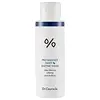What's inside
What's inside
 Key Ingredients
Key Ingredients

 Benefits
Benefits

 Concerns
Concerns

 Ingredients Side-by-side
Ingredients Side-by-side

Water
Skin ConditioningMelaleuca Alternifolia Leaf Extract
PerfumingAcrylates Copolymer
Potassium Laureth Phosphate
EmulsifyingPotassium Cocoyl Glycinate
Sodium Cocoyl Alaninate
Cocamidopropyl Betaine
CleansingButylene Glycol
HumectantSodium Chloride
MaskingPEG-90 Diisostearate
CleansingSodium Benzoate
MaskingPotassium Hydroxide
BufferingCitric Acid
BufferingPhenoxyethanol
PreservativeStyrene/Acrylates Copolymer
Hydroxypropyl Methylcellulose
Emulsion StabilisingGuar Hydroxypropyltrimonium Chloride
Skin ConditioningTrehalose
HumectantHippophae Rhamnoides Extract
MaskingDisodium EDTA
Lavandula Angustifolia Oil
MaskingLinalool
PerfumingMelaleuca Alternifolia Leaf Oil
AntioxidantMorus Alba Extract
AstringentMorus Alba Bark Extract
Skin ConditioningSalix Nigra Bark Extract
Skin ProtectingAdansonia Digitata Leaf Extract
Skin ConditioningPropylene Glycol
HumectantSpirodela Polyrhiza Extract
Skin ConditioningGlyoxal
AntimicrobialHamamelis Virginiana Water
AstringentWater, Melaleuca Alternifolia Leaf Extract, Acrylates Copolymer, Potassium Laureth Phosphate, Potassium Cocoyl Glycinate, Sodium Cocoyl Alaninate, Cocamidopropyl Betaine, Butylene Glycol, Sodium Chloride, PEG-90 Diisostearate, Sodium Benzoate, Potassium Hydroxide, Citric Acid, Phenoxyethanol, Styrene/Acrylates Copolymer, Hydroxypropyl Methylcellulose, Guar Hydroxypropyltrimonium Chloride, Trehalose, Hippophae Rhamnoides Extract, Disodium EDTA, Lavandula Angustifolia Oil, Linalool, Melaleuca Alternifolia Leaf Oil, Morus Alba Extract, Morus Alba Bark Extract, Salix Nigra Bark Extract, Adansonia Digitata Leaf Extract, Propylene Glycol, Spirodela Polyrhiza Extract, Glyoxal, Hamamelis Virginiana Water
Zea Mays Starch
AbsorbentSodium Cocoyl Isethionate
CleansingSodium Lauroyl Glutamate
Sodium Palmitate
CleansingDiglycerin
HumectantUlmus Davidiana Root Extract
Skin ConditioningAmaranthus Caudatus Seed Extract
Skin ConditioningCitrus Aurantium Dulcis Oil
MaskingCitrus Nobilis Peel Oil
MaskingLitsea Cubeba Fruit Oil
MaskingCitric Acid
BufferingCharcoal Powder
AbrasiveAllantoin
Skin ConditioningWater
Skin ConditioningButylene Glycol
HumectantProtease
ExfoliatingLactobacillus Ferment
Skin ConditioningLactobacillus Ferment Lysate
Skin ConditioningLactococcus Ferment Lysate
Skin ConditioningBifida Ferment Filtrate
Skin ConditioningBifida Ferment Lysate
Skin ConditioningTropolone
Skin ConditioningSaccharomyces Ferment Filtrate
Humectant1,2-Hexanediol
Skin ConditioningCaprylyl Glycol
EmollientZea Mays Starch, Sodium Cocoyl Isethionate, Sodium Lauroyl Glutamate, Sodium Palmitate, Diglycerin, Ulmus Davidiana Root Extract, Amaranthus Caudatus Seed Extract, Citrus Aurantium Dulcis Oil, Citrus Nobilis Peel Oil, Litsea Cubeba Fruit Oil, Citric Acid, Charcoal Powder, Allantoin, Water, Butylene Glycol, Protease, Lactobacillus Ferment, Lactobacillus Ferment Lysate, Lactococcus Ferment Lysate, Bifida Ferment Filtrate, Bifida Ferment Lysate, Tropolone, Saccharomyces Ferment Filtrate, 1,2-Hexanediol, Caprylyl Glycol
 Reviews
Reviews

Ingredients Explained
These ingredients are found in both products.
Ingredients higher up in an ingredient list are typically present in a larger amount.
Butylene Glycol (or BG) is used within cosmetic products for a few different reasons:
Overall, Butylene Glycol is a safe and well-rounded ingredient that works well with other ingredients.
Though this ingredient works well with most skin types, some people with sensitive skin may experience a reaction such as allergic rashes, closed comedones, or itchiness.
Learn more about Butylene GlycolCitric Acid is an alpha hydroxy acid (AHA) naturally found in citrus fruits like oranges, lemons, and limes.
Like other AHAs, citric acid can exfoliate skin by breaking down the bonds that hold dead skin cells together. This helps reveal smoother and brighter skin underneath.
However, this exfoliating effect only happens at high concentrations (20%) which can be hard to find in cosmetic products.
Due to this, citric acid is usually included in small amounts as a pH adjuster. This helps keep products slightly more acidic and compatible with skin's natural pH.
In skincare formulas, citric acid can:
While it can provide some skin benefits, research shows lactic acid and glycolic acid are generally more effective and less irritating exfoliants.
Most citric acid used in skincare today is made by fermenting sugars (usually from molasses). This synthetic version is identical to the natural citrus form but easier to stabilize and use in formulations.
Read more about some other popular AHA's here:
Learn more about Citric AcidWater. It's the most common cosmetic ingredient of all. You'll usually see it at the top of ingredient lists, meaning that it makes up the largest part of the product.
So why is it so popular? Water most often acts as a solvent - this means that it helps dissolve other ingredients into the formulation.
You'll also recognize water as that liquid we all need to stay alive. If you see this, drink a glass of water. Stay hydrated!
Learn more about Water